JennAir UDT555SAHP Handleiding
JennAir
Niet gecategoriseerd
UDT555SAHP
Bekijk gratis de handleiding van JennAir UDT555SAHP (72 pagina’s), behorend tot de categorie Niet gecategoriseerd. Deze gids werd als nuttig beoordeeld door 8 mensen en kreeg gemiddeld 4.8 sterren uit 4.5 reviews. Heb je een vraag over JennAir UDT555SAHP of wil je andere gebruikers van dit product iets vragen? Stel een vraag
Pagina 1/72

DISHWASHER
USER INSTRUCTIONS
Dishwasher Safety
Table of Contents
THANK YOU for purchasing this high-quality product. Register your new dishwasher at www.whirlpool.com. In Canada, visit our website
at www.whirlpool.ca.
Get Internet connection instructions, terms of use, and privacy policy at www.whirlpool.com/connect. If you have any problems or
questions, call the Whirlpool Connected Appliance Team at . In Canada, visit 1-866-333-4591 www.whirlpool.ca/en_CA and click on the
Whirlpool® Connected Appliances link.
For future reference please make a note of your product model and serial numbers. These can be located near the door on the
right-hand or left-hand side of the dishwasher interior.
Model Number _____________________________________________ Serial Number _____________________________________________
W10901525B
DISHWASHER SAFETY 1 ..............................................................
CONNECTED APPLIANCE REGULATORY NOTICE 3 .................
WHAT’S NEW IN YOUR DISHWASHER 4 .....................................
PARTS AND FEATURES 5 .............................................................
QUICK STEPS 6 ............................................................................
CONNECTIVITY FEATURES 6 .......................................................
CONNECTIVITY SETUP 7 ..............................................................
DISHWASHER USE – BASIC OPERATION 8 ................................
DISHWASHER USE – SMART OPERATION 10 ............................
CYCLE AND OPTION DESCRIPTIONS....................................11
DISHWASHER FEATURES 14 .......................................................
FILTRATION SYSTEM 16 ...............................................................
DISHWASHER CARE 17 ................................................................
TROUBLESHOOTING – CONNECTIVITY 18 ................................
TROUBLESHOOTING 20 ...............................................................
OPEN SOURCE LICENSE USAGE 23 ...........................................
WARRANTY 24 ...............................................................................

2
IMPORTANT SAFETY INSTRUCTIONS
WARN G:IN When using the dishwasher, follow basic precautions, including the following:
SAVE THESE INSTRUCTIONS
■ Read all instructions before using the dishwasher.
■ Use the dishwasher only for its intended function.
■ Use only detergents or rinse agents recommended for use in
a dishwasher, and keep them out of the reach of children.
■ When loading items to be washed:
1) Locate sharp items so that they are not likely to damage
the door seal; and
2) Load sharp knives with the handles up to reduce the risk
of cut-type injuries.
■ Do not wash plastic items unless they are marked
“dishwasher safe” or the equivalent. For plastic items not so
marked, check the manufacturer's recommendations.
■ Do not touch the heating element during or immediately after
use.
■ Do not operate the dishwasher unless all enclosure panels
are properly in place.
■ Do not tamper with controls.
■ Do not abuse, sit on, or stand on the door, lid, or dish racks
of the dishwasher.
■ To reduce the risk of injury, do not allow children to play in
or on the dishwasher.
■ Under certain conditions, hydrogen gas may be produced in
a hot water system that has not been used for two weeks or
more. HYDROGEN GAS IS EXPLOSIVE. If the hot water
system has not been used for such a period, before using
the dishwasher turn on all hot water faucets and let the
water flow from each for several minutes. This will release
any accumulated hydrogen gas. As the gas is flammable,
do not smoke or use an open flame during this time.
■ Remove the door or lid to the washing compartment
when removing an old dishwasher from service or
discarding it.
GROUNDING INSTRUCTIONS
SAVE THESE INSTRUCTIONS
■ For a grounded, cord-connected dishwasher:
The dishwasher must be grounded. In the event of a
malfunction or breakdown, grounding will reduce the risk of
electric shock by providing a path of least resistance for
electric current. The dishwasher is equipped with a cord
having an equipment-grounding conductor and a grounding
plug. The plug must be plugged into an appropriate outlet
that is installed and grounded in accordance with all local
codes and ordinances.
WARN G:IN Improper connection of the equipment-
grounding conductor can result in a risk of electric shock.
Check with a qualified electrician or service representative
if you are in doubt whether the dishwasher is properly
grounded. Do not modify the plug provided with the
dishwasher; if it will not fit the outlet, have a proper outlet
installed by a qualified electrician.
■ For a permanently connected dishwasher:
The dishwasher must be connected to a grounded metal,
permanent wiring system, or an equipment-grounding
conductor must be run with the circuit conductors and
connected to the equipment-grounding terminal or lead on
the dishwasher.
Tip Over Hazard
Do not use dishwasher until completely installed.
Do not push down on open door.
Doing so can result in serious injury or cuts.
WARNING

3
Connected Appliance Regulatory Notices
Federal Communications Commission (FCC)
Compliance Notice
This equipment has been tested and found to comply with the
limits for a Class B digital device, pursuant to Part 15 of the
FCC Rules. These limits are designed to provide reasonable
protection against harmful interference in a residential installation.
This equipment generates, uses, and can radiate radio
frequency energy and, if not installed and used in accordance
with the instructions, may cause harmful interference to radio
communications. However, there is no guarantee that interference
will not occur in a particular installation. If this equipment does
cause harmful interference to radio or television reception, which
can be determined by turning the equipment off and on, the user
is encouraged to try to correct the interference by one of the
following measures:
Reorient or relocate the receiving antenna.
Increase the separation between the equipment and receiver.
Connect the equipment into an outlet on a circuit different from
that to which the receiver is connected.
Consult the dealer or an experienced radio/TV technician for
help. This device complies with Part 15 of the FCC Rules.
Operation is subject to the following two conditions:
1. This device may not cause harmful interference, and
2. This device must accept any interference received, including
interference that may cause undesired operation.
Changes or modications not expressly approved by the party
responsible for compliance could void the user’s authority to
operate the equipment.
RF Exposure Information
To comply with FCC/IC RF exposure requirements for mobile
transmitting devices, this transmitter should only be used or
installed at locations where there is at least 20 cm separation
distance between the antenna and all persons.
To comply with FCC/IC RF exposure limits for general
population/uncontrolled exposure, the antenna(s) used for this
transmitter must be installed to provide a separation distance of
at least 20 cm from all persons and must not be co-located or
operating in conjunction with any other antenna or transmitter.
Industry Canada (IC) Compliance Notice
This Device complies with Industry Canada License-exempt RSS
standard(s). Operation is subject to the following two conditions:
1. This device may not cause interference,
2. This device must accept any interference, including
interference that may cause undesired operation of the device.
Under Industry Canada regulations, this radio transmitter may
only operate using an antenna of a type and maximum (or lesser)
gain approved for the transmitter by Industry Canada. To reduce
potential radio interference to other users, the antenna type and its
gain should be so chosen that the equivalent isotropically radiated
power (e.i.r.p.) is not more than that necessary for successful
communication.
The radio transmitters IC: 10248A-WICHAM01 and
10248A-FLDAAM01 have been approved by Industry Canada to
operate with the antenna types listed below with the maximum
permissible gain and required antenna impedance for each
antenna type indicated. Antenna types not included in this list,
having a gain greater than the maximum gain indicated for that
type, are strictly prohibited for use with this device.
Antenna Type Maximum Permissible
Antenna Gain (dBi)
Required
Impendance
(OHM)
Slot 1.2 50
Monopole
(WICHAM01 only) 0.5 50
Dipole 3.0 50
F 1.60 50
Planar F 4.2 50
To comply with FCC and Industry Canada RF radiation exposure
limits for general population, the antenna(s) used for this
transmitter must be installed such that a minimum separation
distance of 20 cm is maintained between the radiator (antenna)
and all persons at all times and must not be co-located or
operating in conjunction with any other antenna or transmitter.
Le présent appareil est conforme aux CNR d’Industrie Canada
applicables aux appareils radio exempts de licence. L’exploitation
est autorisée aux deux conditions suivantes :
(1) l’appareil ne doit pas produire de brouillage, et
(2) l’utilisateur de l’appareil doit accepter tout brouillage
radioélectrique subi, même si le brouillage est susceptible d’en
compromettre le fonctionnement. Conformément à la réglementation
d’Industrie Canada, le présent émetteur radio peut fonctionner avec
une antenne d’un type et d’un gain maximal (ou inférieur) approuvé
pour l’émetteur par Industrie Canada. Dans le but de réduire
les risques de brouillage radioélectrique à l’intention des autres
utilisateurs, il faut choisir le type d’antenne et son gain de sorte que
la puissance isotrope rayonnée équivalente (p.i.r.e.) ne dépasse
pas l’intensité nécessaire à l’établissement d’une communication
satisfaisante. Le émetteurs radio IC : 10248A-WICHAM01et
10248A-FLDAAM01ont été approuvés par Industrie Canadapour
fonctionner avec les types d’antenne énumérés ci-dessous et ayant
un gain admissible maximal et l’impédance requise pour chaque
type d’antenne. Les types d’antenne non inclus dans cette liste, ou
dont le gain est supérieur au gain maximal indiqué, sont strictement
interdits pour l’exploitation de l’émetteur.
Type d’antenne Gain
admissiblemaximal
d’antenne (dBi)
L’impédance
requise (OHM)
À fentes 1.2 50
Monopôle (WICHAM01
seulement) 0.5 50
Dipole 3.0 50
F 1.60 50
Planaire F 4.2 50
Pour satisfaire aux exigences de la FCC et IC d’exposition aux
radiofréquences, une distance de séparation de 20 cm ou plus
doit être maintenue entre cet appareil et des personnes lors de
fonctionnement du dispositif. Pour assurer la conformité des
opérations au plus près que cette distance n’est pas recommandée.
L’antenne utilisée pour ce transmetteur ne doit pas être co-localisés
en conjonction avec toute autre antenne ou transmetteur.
OEM Responsibilities to comply with FCC and Industry Canada
Regulations
The WICHAM01/FLDAAM01 Modules have been certied for
integration into products only by OEM integrators under the
following conditions:
1. The antenna(s) must be installed such that a minimum
separation distance of 20 cm is maintained between the
radiator (antenna) and all persons at all times.
2. The transmitter module must not be co-located or operating in
conjunction with any other antenna or transmitter.
As long as the two conditions above are met, further transmitter
testing will not be required. However, the OEM integrator is
still responsible for testing their end-product for any additional
compliance requirements required with this module installed (for
example, digital device emissions, PC peripheral requirements,
etc.).
IMPORTANT NOTE: In the event that these conditions cannot
be met (for certain congurations or co-location with another
transmitter), then the FCC and Industry Canada authorizations
are no longer considered valid and the FCC ID and IC
Certication Number cannot be used on the nal product. In
these circumstances, the OEM integrator will be responsible
for re-evaluating the end product (including the transmitter) and
obtaining a separate FCC and Industry Canada authorization.
End Product Labeling
The WICHAM01/FLDAAM01 Modules are labeled with FCC ID and
IC Certication Number. If the FCC ID and IC Certication Number
are not visible when the module is installed inside another device,
then the outside of the device into which the module is installed
must also display a label referring to the enclosed module. In that
case, the nal end product must be labeled in a visible area or
display the following:
“Contains FCC ID: A5UWICHAM01”
“Contains IC: 10248A-WICHAM01”
or
“Contains FCC ID: A5UFLDAAM01”
“Contains IC: 10248A-FLDAAM01”
The OEM of the WICHAM01/FLDAAM01 Module must only use the
approved antenna(s), which have been certied with this module.
The OEM integrator has to be aware not to provide information to
the end user regarding how to install or remove this RF module
or change RF related parameters in the user manual of the end
product.
The user manual for the end product must include the
following information in a prominent location:
“To comply with FCC and Industry Canada RF radiation exposure
limits for general population, the antenna(s) used for this
transmitter must be installed such that a minimum separation
distance of 20 cm is maintained between the radiator (antenna)
and all persons at all times and must not be co-located or
operating in conjunction with any other antenna or transmitter.”
Product specificaties
| Merk: | JennAir |
| Categorie: | Niet gecategoriseerd |
| Model: | UDT555SAHP |
Heb je hulp nodig?
Als je hulp nodig hebt met JennAir UDT555SAHP stel dan hieronder een vraag en andere gebruikers zullen je antwoorden
Handleiding Niet gecategoriseerd JennAir

5 November 2024

5 November 2024

8 Juli 2023

7 Juli 2023

23 Juni 2023

20 Juni 2023

19 Juni 2023

18 Juni 2023

18 Juni 2023

18 Juni 2023
Handleiding Niet gecategoriseerd
- Fibaro
- Kaiser Fototechnik
- Zibro
- Nemef
- Xterra
- Wmf
- Cablexpert
- Kaona
- AC Infinity
- Autodesk
- Eura
- Primus WindPower
- STEALTH Gaming
- LECO
- EZ Dupe
Nieuwste handleidingen voor Niet gecategoriseerd

17 September 2025

17 September 2025

17 September 2025

17 September 2025

17 September 2025
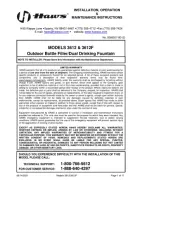
17 September 2025
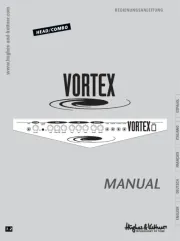
17 September 2025
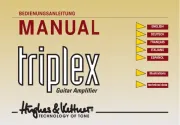
17 September 2025
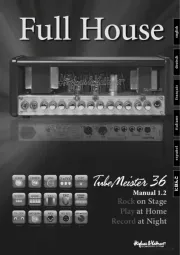
17 September 2025
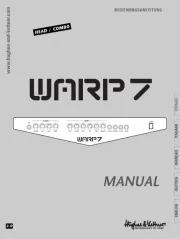
17 September 2025